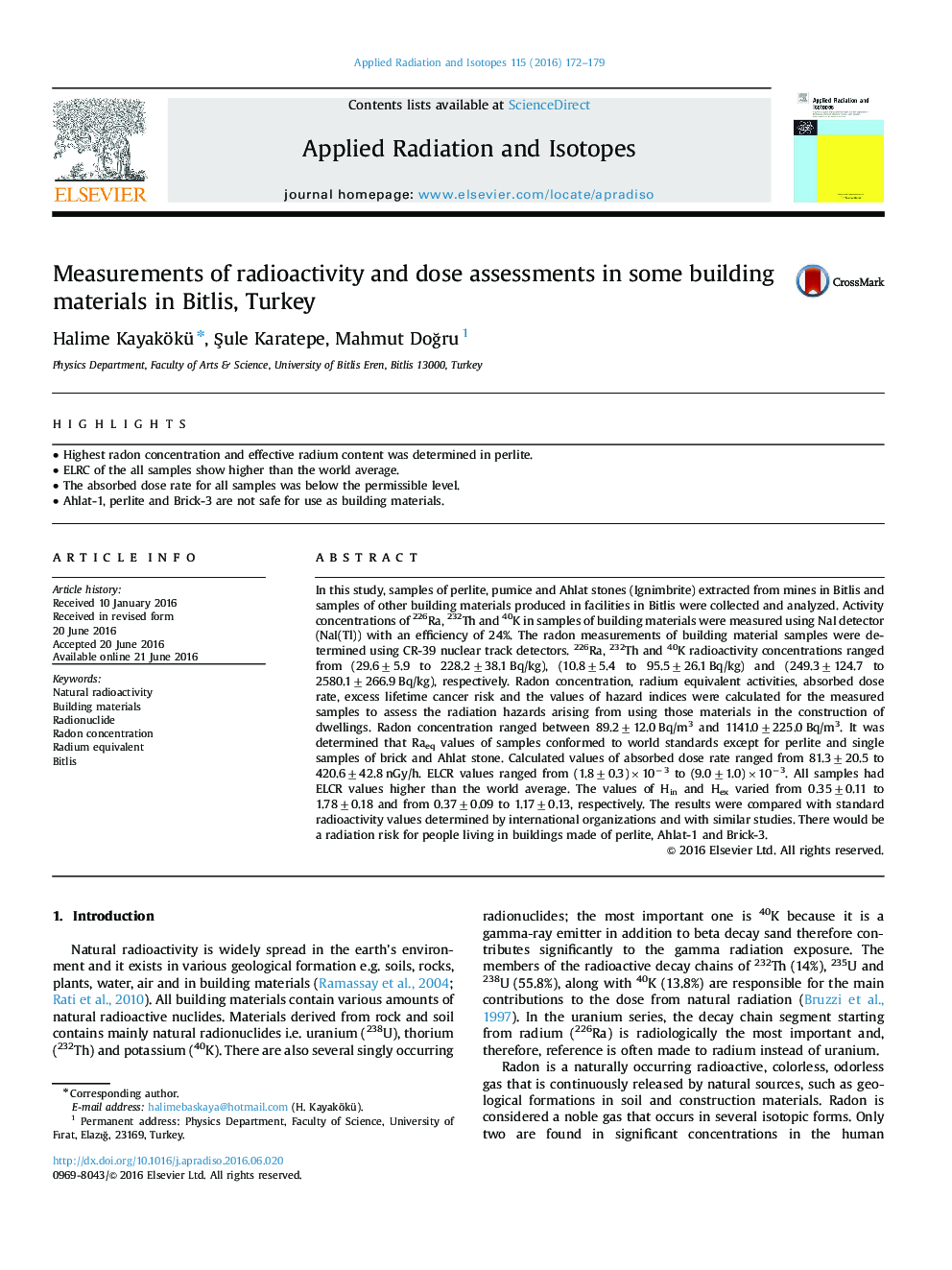| Article ID | Journal | Published Year | Pages | File Type |
|---|---|---|---|---|
| 8209165 | Applied Radiation and Isotopes | 2016 | 8 Pages |
Abstract
In this study, samples of perlite, pumice and Ahlat stones (Ignimbrite) extracted from mines in Bitlis and samples of other building materials produced in facilities in Bitlis were collected and analyzed. Activity concentrations of 226Ra, 232Th and 40K in samples of building materials were measured using NaI detector (NaI(Tl)) with an efficiency of 24%. The radon measurements of building material samples were determined using CR-39 nuclear track detectors. 226Ra, 232Th and 40K radioactivity concentrations ranged from (29.6±5.9 to 228.2±38.1 Bq/kg), (10.8±5.4 to 95.5±26.1 Bq/kg) and (249.3±124.7 to 2580.1±266.9 Bq/kg), respectively. Radon concentration, radium equivalent activities, absorbed dose rate, excess lifetime cancer risk and the values of hazard indices were calculated for the measured samples to assess the radiation hazards arising from using those materials in the construction of dwellings. Radon concentration ranged between 89.2±12.0 Bq/m3 and 1141.0±225.0 Bq/m3. It was determined that Raeq values of samples conformed to world standards except for perlite and single samples of brick and Ahlat stone. Calculated values of absorbed dose rate ranged from 81.3±20.5 to 420.6±42.8 nGy/h. ELCR values ranged from (1.8±0.3)Ã10â3 to (9.0±1.0)Ã10â3. All samples had ELCR values higher than the world average. The values of Hin and Hex varied from 0.35±0.11 to 1.78±0.18 and from 0.37±0.09 to 1.17±0.13, respectively. The results were compared with standard radioactivity values determined by international organizations and with similar studies. There would be a radiation risk for people living in buildings made of perlite, Ahlat-1 and Brick-3.
Related Topics
Physical Sciences and Engineering
Physics and Astronomy
Radiation
Authors
Halime Kayakökü, Åule Karatepe, Mahmut DoÄru,
